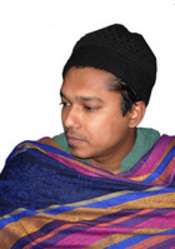
Ancient Indian paintings and sculptures were largely inspired by Indian mythology and religion. So, there are many ancient texts and treatises that have been written on the art and style to be followed in pursuing the path of art. Let us understand the secrets of ancient texts on paintings i.e. Chitrasutra.
Chitrasutra is a group of texts on the art of painting. They were compiled during the Gupta period between 450 A.D. till 650 A.D. There are four of them namely:-
1. Chitra-Lakshana- The one describing the myth of King Naganajit. Vishnu-dharmottara Purana.
2. Shilpashatra dedicates parts to paintings. For instance, Narada Purana describes intricacies relating to paintings from chapters 66 to 71 of the treatise.
3. Saraswati Shilpashastra describe the types of paintings as
- Chitra
- Ardha-Chitra
- Chitra-Bhasha
- Varna Sanskara
4. Shilparatna, which was written in the 16th century by Srikumara, holds significant authority in the field of traditional Indian art.
The Myth of Nagnajit
Like every other word of wisdom, the art of painting is also believed to have descended from the heavenly abode of Gods. Chitra-Lakshana and Vishnu-dharmottara are the two ancient texts that describe the Myth of Nagnajit.
It goes like that:-
A brahmin came wailing to a king who was known for being magnanimous and full of wisdom. The Brahmin was struck by the grief of the death of his young son.
The King invoked the Lord of death, Yamaraj, and asked him to free his son from the clutches of death. Yamaraj replied that he is bound by destiny and Karma and freeing his son or granting his life back is something that is not in his power.
The king refused to understand and kept on insisting Yamaraj. Soon the war of words turned into a war of weapons. Irked Yamaraj let loose his minions known as Pretas upon the king. The king was valiant and courageous.
He fought all of Yama’s tricks easily. Yama was about to strike the king with a death blow which could have endangered the whole of existence but, the war stopped by the intervention of Brahma.
Also read: A Brief Introduction About Indian Paintings
Lord Brahma asked the king to paint a life-like and colored portrait of the dead son of Brahmin. The king did what was asked and by Lord Brahma’s boon that painting turned into a living being.
The king asked Brahma that as he has defeated all the ghouls and ghosts sent by Yamaraj to kill him, he wants to be remembered as the one who defeated and conquered the Preta or Nagnajit. 'Nagna' means naked and 'Jeet' means victorious. He was also respected for bringing the art of painting into the realm of the mortals.
It was also believed that to invoke the boon of gods to establish a sanctum of worship, painting pictures is the primary task. For this reason, this expression of colors is revered as being Veda or divine wisdom. Lord Brahma asks Nagnajit to pursue the art of painting under Vishvakarman who would oblige him by making him understand the rules and principles of this art.
Vishvakarman elucidated that the rules and principles of Indian paintings originally came from the one who is the descendant of a lotus i.e. Lord Brahma. These covenants are followed and respected by the gods themselves. They describe:-
- Measurements
- Colors to be used in a painting
- Composition
- Beauty
- Proportions
- Form
- Appearance
- Ornamentation
- Motifs
Vishvakarman was taught by these rules by Lord Brahma and that I why he sent Nagnajit to visit Vishvakarman to receive education in art and spread it in the mortal realm i.e. earth.
The Concept of Measurement Regarding Human Anatomy in Indian Art
The instructions on the measurement related to the minute details of drawing human figures in their natural forms in the paintings. This proves that ancient Indian painters didn’t foster any stereotypical views against nakedness. They accepted it as being natural and nothing to be ashamed of. It was neither glorified nor condemned. Nakedness, as a theme for a painting, was accepted whole-heartedly.
Depiction of nakedness in Indian Paintings
If we observe the ancient art mainly drawn on walls and caves, we will find that the artwork produced in the bygone era represented gods, heroes, kings, etc. in their naked form without any inhibition. The frescoes found at the Jogimara caves that are believed to have been made in the 3rd century B.C.E. are situated at Amarnath, from where the Narmada originated, in Sarguja in the state of Chhattisgarh. They deal in the subject of natural human forms unabashedly. You may find and buy paintings online in India if you want.
Another Lore Regarding the Origin of Painting
Vishnudhramottara Purana is also one of the ancient scriptures that accounts for forms and styles of paintings. The myth recorded by these texts says that the principles and covenants of Chitra were created by Narayana a long time ago. He was a sage who painted a lady on his thigh and thus Urvashi, the heavenly nymph, was born.
According to this text, painting is the highest of all the art forms and elicits following feelings in a man in their purest form:-
- Dharma
- Artha
- Kama
Purpose of Chitrasutra
The main objective of Chitrasutra was to train the artist in such a way that whatever he produces must be impeccable. The spectator must be snared into the captivity of the artwork so created. The lines drawn, the colors painted and the contouring of the anatomy must be subtle and life-like.
An artwork that displays and evokes feelings of playfulness, seduction, beauty, melancholy, etc. at a glance is worth making and observing. The posture and appearance of the countenance of the subject matter must make the painting visually appealing.
So to say…..
Thus, the penultimate aim of laying down these rules and their strict adherence was to nurture an artist’s mind to the extent that making art becomes worship for him. This is the way of knowing God through the expression of self. The honesty and hard work of the artist add auspiciousness and piousness to the artwork.





















